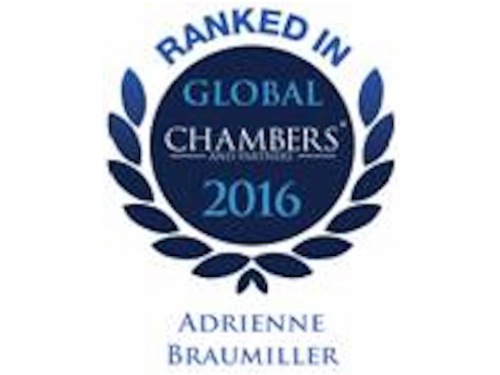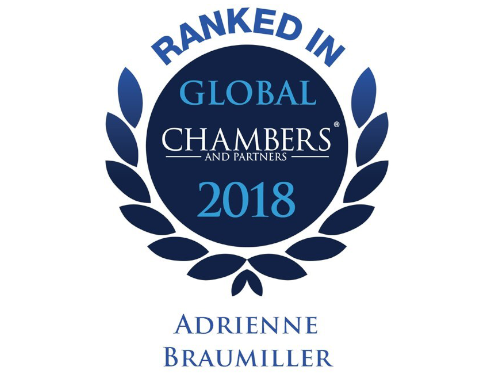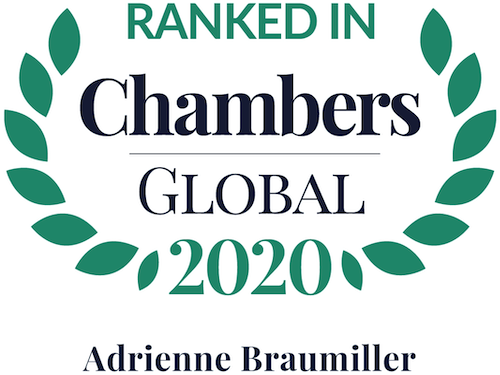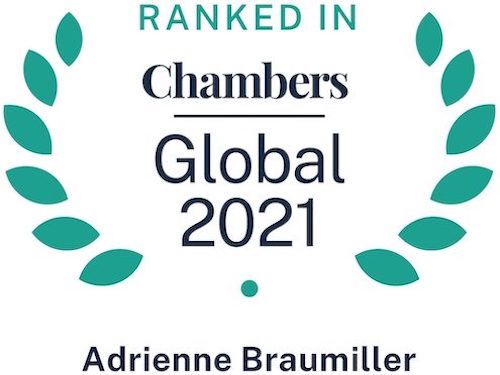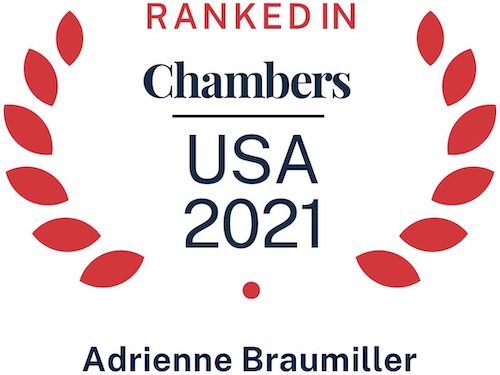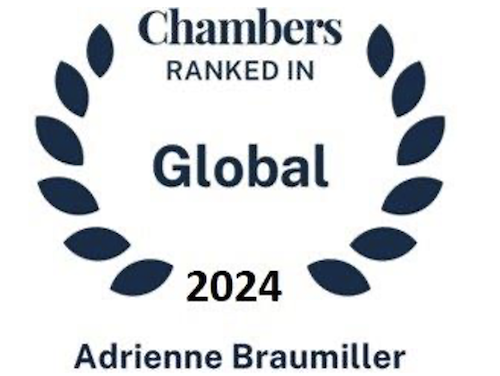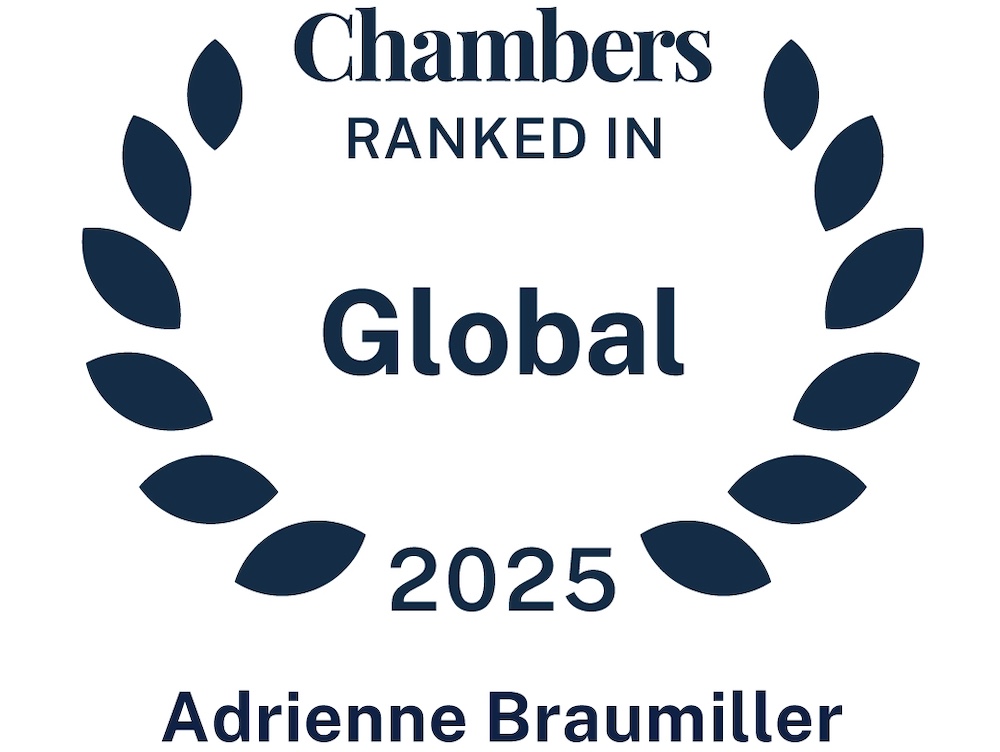Rare Earth Minerals, and China’s Global Dominance
By Bob Brewer, Braumiller Law Group
If I heard it once, I’ve heard it a thousand times, China is the sourcing capital of the world. I’ve also repeated this statement at least 400+ times in many conversations over the years regarding global trade. China, it’s also where the global market goes for rare earth minerals, among thousands of other necessary elements for a veritable plethora of life’s essential things. By the end of 2024, China produced more than two-thirds (approximately 70%) of the world’s rare earth minerals. Additionally, China controls over 80% of the global processing capacity for these minerals, which is a critical part of the global supply chain.
Therefore, I ask, does it make sense that we (the U.S.) would be poking the bear with a heightened trade war with more tariffs, when in fact they could, and they have, banned the export of many of these essential elements necessary within a multitude of manufacturing processes, including advanced microchips. President Donald Trump, recently posted on Truth Social: “I just concluded a very good phone call with President Xi, of China, discussing some of the intricacies of our recently made, and agreed to, trade deal. The call lasted approximately one and a half hours, and it resulted in a very positive conclusion for both Countries. There should no longer be any questions respecting the complexity of rare earth products.” (Minerals, and it’s Tesla, not Tesler)
Hmmmm…….we shall see.
So, let’s take a quick look at just who holds the cards when it comes to these reserves.
Top Countries by Rare-Earth Reserves (2025)
- China – 44 million metric tons,
- Vietnam – 22 million metric tons
- Brazil – 21 million metric tons
- Russia – 10 million metric tons
- India – 6.9 million metric tons
- Australia – 5.7 million metric tons
- United States – 1.8 million metric tons
These rare-earth elements are essential for producing things such as Smartphones and electronics, electric vehicle batteries, wind turbines, military equipment, and advanced medical devices. China leads in both reserves and production, but as you can see countries like Brazil and Vietnam are emerging as significant players due to their large untapped reserves. Therefore, Vietnam and Brazil obviously have some cards to play with the Trump administration when it comes to the tariff negotiations, if in fact the administration is doing their homework. (Vietnam had one of the highest reciprocal tariff rates on the infamous chart) As far as the U.S., and our paltry 1.8 million metric tons, well, the largest, rare earth mineral deposit in the United States is currently the Halleck Creek Project in Wyoming. California also has some reserves.
When it comes to the U.S. throwing their weight around as the bully with the tariffs imposed on each country it does make one wonder, what cards do some of these other countries hold, if any. As President Trump was recently ambushing the South African President in the White House, Ramaphosa was touting the rare earth elements that his country possessed. His pitch fell on deaf ears. However, the continent of Africa as a whole is projected to produce about 10% of the world’s rare earth minerals by 2030, with South Africa contributing to this growth through operations like the Steenkamps kraal mine, which is known for having one of the highest grades of rare earth elements globally. Key operative words there are “highest grades.”
Another example comes to mind when the Trump administration was negotiating with Ukraine in the atypical transgressional transactional manner, where the rare earth minerals that they posses becomes a key element in the discussion. (I use the term discussion lightly) It also becomes Ukraine’s security if the U.S. was in collaboration with them regarding mining it. Putin wouldn’t dare upset that little apple cart of commerce, would he?
When looking at the quest for world dominance, and rare earth minerals, it’s really China’s game to lose, and I do not personally see that happening as China is leveraging the current trade landscape with the U.S. as the “bad guy.” Speaking of a quest, sometimes at night, when the work is done, I put my Meta Quest 3 virtual reality headset on and pop on YouTube and watch videos of China’s infrastructure marvels. It’s absolutely amazing what they have been building over the last decade, not to mention the unbelievable speed at which these mega projects are completed, but that’s an entirely separate article. So, without further digression, like I always do, let’s focus on just what these rare earth minerals are, and why they are so damn important. Stick with me, it’s going to sound like your geology class in college, where you really should have paid better attention because that “C” really brought down your overall GPA. Oh wait, that was me, anyway, let’s get specific.
So, why are these rare earth elements so essential? The exact number varies by chip type and application, but a typical microchip may involve 6–10 different rare earth or critical minerals, depending on its complexity and function, and thousands of everyday items that we use rely on microchips. Based on a typical day, the average person interacts with approximately 71 microchips. Yep, on a daily basis, we humans for the most part couldn’t function without these wafer-thin chips, planted in essentials like our Smartphones and computers. It’s also why China wants Taiwan, home to the largest manufacturer of advanced computer chips on the planet, but that too is an entirely separate article.
Moving right along, advanced microchips rely on several rare earth elements (REEs) and other critical materials due to their unique electrical, magnetic, and thermal properties. Here’s a breakdown of the most important ones used in semiconductor manufacturing:
Rare Earth Elements Used in Microchip Production
Cerium (Ce) – Used in chemical-mechanical planarization (CMP) for wafer polishing, a key step in chip fabrication. Lanthanum (La) – Utilized in high-k dielectrics for transistors, improving performance and reducing power consumption. Yttrium (Y) – Also used in high-k dielectric materials, often in combination with lanthanum. Neodymium (Nd) – Essential for powerful magnets in semiconductor manufacturing equipment. Dysprosium (Dy) – Enhances the high-temperature performance of magnets used in chipmaking tools. Europium (Eu) – Important in phosphors for display technologies, which are often integrated with chips. Gadolinium (Gd) – Used in magnetic and optical applications within semiconductor processes. Scandium (Sc) – Applied in alloys and high-performance materials for chip manufacturing. Gallium, and Germanium
So, let’s also break down just who has how much of each in relation to these highly coveted minerals. Well, here’s a spoiler, it’s China of course, but let’s go one-by-one and get the whole picture.
As of 2025, China is the world’s leading producer of cerium, accounting for approximately 60% of global production.
Other Notable Cerium Producers:
- United States – Around 10% of global production, primarily from operations like the Mountain Pass mine in California .
- Australia, India, and Russia also contribute smaller shares, but none rival China’s scale or output.
Cerium is primarily extracted from bastnäsite and monazite ores, which are abundant in China. It’s widely used in glass polishing, catalytic converters, semiconductor manufacturing, and UV filters and optics
China is the largest producer of lanthanum in the world.
Other Notable Lanthanum Producers:
- India – Has significant reserves and is increasing production capacity.
- Australia – A growing player in rare-earth mining, including lanthanum.
- United States – Produces lanthanum primarily from the Mountain Pass mine in California.
- Russia and Brazil – Also contribute to global lanthanum output, though at smaller scales.
Lanthanum is typically extracted as part of mischmetal, an alloy that contains multiple rare earths, with lanthanum often making up more than 50% of the mix. It’s widely used in Nickel-metal hydride (NiMH) batteries for hybrid vehicles, optical lenses, glass polishing, and petroleum refining catalysts.
China is by far the largest producer of yttrium in the world. Most of the global yttrium supply comes from weathered clay ion-adsorption deposits located in southern Chinese provinces such as:
- Fujian
- Guangdong
- Jiangxi
- Guangxi
- Hunan
These deposits are particularly rich in heavy rare earth elements (HREEs) like yttrium, which are scarcer and more valuable than light rare earths.
Other Countries Producing Yttrium (in smaller quantities):
- Myanmar (Burma) – Also has ion-adsorption clay deposits similar to China.
- India – Produces yttrium as a byproduct of monazite sand processing.
- United States – Extracts yttrium from bastnäsite ore at the Mountain Pass mine, but in very small amounts .
China’s dominance is not just in mining but also in processing and refining, which gives it a near-monopoly on the global yttrium supply chain.
China is the largest producer of neodymium, accounting for over 80% of the global supply. The majority of this production comes from the Bayan Obo mine in Inner Mongolia, which is one of the largest, rare earth element deposits in the world and is especially rich in bastnäsite, a key source of neodymium.
Other Notable Neodymium Producers:
- Myanmar – A significant source of rare earths, including neodymium, especially from ion-adsorption clay deposits.
- Australia – Home to rare earth projects like Mount Weld, which produce neodymium as part of mixed rare earth concentrates.
- United States – The Mountain Pass mine in California contributes to neodymium production, though it still relies on China for processing.
- Russia and India – Have growing rare earth mining sectors, including neodymium, but remain smaller players compared to China .
Neodymium is critical for making high-strength permanent magnets, which are essential in:
- Electric vehicle motors
- Wind turbines
- Smartphones and headphones
- Aerospace and defense systems
China is the dominant global producer of dysprosium, accounting for approximately 98% of the world’s supply. This overwhelming share is due to China’s extensive reserves of ion-adsorption clay deposits, particularly in southern provinces like Jiangxi, Guangdong, and Guangxi, which are rich in heavy rare earth elements (HREEs) such as dysprosium.
Other Countries with Notable Dysprosium Production:
- Australia – Emerging as a secondary producer, especially through projects like the Browns Range mine in Western Australia.
- United States, India, and Brazil – Have known dysprosium resources but contribute only marginally to global production
Why Dysprosium Matters:
Dysprosium is essential for:
- High-performance magnets (especially NdFeB magnets used in EV motors and wind turbines)
- Nuclear reactor control rods
- Data storage devices
- Defense technologies
China is the largest producer of europium, just as it is for most other rare earth elements. Europium is primarily extracted from monazite and bastnäsite ores, which are abundant in China’s rare earth mining regions, particularly in Inner Mongolia and southern provinces like Jiangxi and Sichuan.
Other Countries with Minor Europium Production:
- India – Has monazite-rich beach sands, especially in Kerala and Tamil Nadu.
- Russia – Possesses rare earth reserves but contributes only modestly to europium output.
- Australia – Produces europium as a byproduct of rare earth mining, particularly at Mount Weld.
Why Europium Is Important:
Europium is used in:
- Red and blue phosphors in LED and fluorescent lighting
- Color displays (TVs, monitors, smartphones)
- Nuclear reactor control rods
- Anti-counterfeiting features in euro banknotes
China is the largest producer of gadolinium, continuing its dominance in the rare earth elements market. Gadolinium is also primarily extracted from ion-adsorption clay deposits and bastnäsite ores, which are abundant in China’s southern provinces and Inner Mongolia.
Other Countries with Gadolinium Production:
- India – Produces gadolinium as a byproduct of monazite sand processing.
- Australia – Has growing rare earth operations that include gadolinium.
- Russia and United States – Have reserves and limited production but rely heavily on imports for refined gadolinium.
Key Uses of Gadolinium:
- MRI contrast agents (Gadolinium-based contrast agents or GBCAs)
- Magnetic refrigeration materials
- Nuclear reactor shielding
- High-performance electronics and sensors
As of 2025, China is the top producer of scandium
Primary source: Byproduct of rare-earth element (REE) and titanium dioxide production.
- China leads in scandium output due to its vast REE mining infrastructure and processing capabilities. Also notable, Philippines produces scandium from nickel-laterite tailings, a byproduct of nickel mining, Kazakhstan and Ukraine extract scandium from uranium production waste and nickel-laterite ores, Australia is an (Emerging Producer) with projects like Clean TeQ Sunrise and Scandium International’s Nyngan which is expected to boost Australia’s role in scandium production in the coming years.
Scandium is highly valued for its use in:
- Aerospace alloys (lightweight and strong)
- Solid oxide fuel cells (SOFCs)
- 3D printing materials
- High-performance sports equipment
Also of note, China has the highest concentration and production of gallium in the world. Gallium is not mined directly but is primarily recovered as a byproduct of bauxite (aluminum ore) and zinc processing. China’s dominance is due to:
- Its massive bauxite refining industry, which allows for efficient gallium extraction.
- Advanced refining and purification infrastructure.
- Government policies that have historically supported rare earth and critical mineral production.
Other Countries with Notable Gallium Activity:
- Germany, Japan, Canada, and Slovakia also produce high-purity gallium, but at much smaller scales .
- The United States has no primary gallium production and relies entirely on imports, mainly from Japan, China, and Germany
Strategic Importance:
In late 2024, China imposed an export embargo on gallium, highlighting its strategic value and the vulnerability of global supply chains.
China is the largest producer of germanium in the world, maintaining a dominant position in both primary production and refining capacity.
Why China Leads:
- Germanium is primarily recovered as a byproduct of zinc and coal mining, and China has extensive operations in both sectors.
- The country has advanced refining infrastructure to produce high-purity germanium metal, dioxide, and tetrachloride.
- In 2024, China implemented an export licensing program for germanium, further emphasizing its strategic control over the supply chain.
Other Countries with Germanium Production:
- Canada – Processes germanium-containing concentrates imported from the U.S.
- Belgium and Germany – Major refiners and exporters, though they import much of their raw material.
- United States – Has limited production from zinc mines in Alaska and Tennessee, but relies heavily on imports for refined germanium
.
China is the largest producer of tungsten in the world, accounting for approximately 97% of Asia’s production and over 80% of global output.
Why China Leads:
- Major tungsten-producing provinces include Jiangxi, Hunan, and Guangdong.
- China has vast reserves of wolframite and scheelite, the two main tungsten ores.
- It also dominates the refining and processing stages, giving it control over the entire supply chain.
Other Notable Tungsten Producers:
- Vietnam
- Russia
- Bolivia
- Rwanda
- Austria
These countries contribute smaller shares but are investing in expanding their tungsten mining and refining capacities due to rising global demand and concerns over supply concentration. The key industries that rely on Tungsten are electronics and aerospace.
As of April 2025, China imposed export restrictions on seven rare earth elements in response to U.S. tariffs. These restrictions require exporters to obtain special licenses, effectively limiting access to these critical materials for U.S. industries.(Currently being negotiated according to the Trump Administration)
The seven Rare Earth Elements Under Export Restrictions:
- Scandium (Sc)
- Yttrium (Y)
- Samarium (Sm)
- Gadolinium (Gd)
- Terbium (Tb)
- Dysprosium (Dy)
- Lutetium (Lu)
Honorable mentions are Praseodymium (Pr) and Samarium (Sm)
In conclusion, one must admit, China certainly has a distinct advantage in the global supply chain when it comes to the key elements needed to manufacture a good portion of the essentials in our daily lives. Even the world’s largest producer of microchips Taiwan’s TSMC (Taiwan Semiconductor Manufacturing Company), sources many of its rare earth minerals and critical materials indirectly through global supply chains, with a significant portion ultimately originating from China.
So, if you got this far in the article, and possibly your eyes have rolled up into the back of your head, and you think, ugh, why does this “stuff” that comes from the earth’s soil matter, I urge you to take a look at an even bigger picture, and that’s the race between the giants in chip manufacturing, NVIDIA, Intel, AMD and Samsung. Billions of dollars are being allocated globally to secure one’s place, and country, in the race for advanced chip manufacturing, as well as eventual AI dominance, which includes billions being spent by Amazon, Microsoft and Google. The U.S. Chips Act is testimony to this causse with $50 billion being allocated to manufacture in the U.S. In my state of Texas alone, Samsung is building a $17 billion facility in Taylor Texas. NVIDIA is looking into Arizona for a possible facility, AMD will be manufacturing chips via TSMC in Arizona, while Intel is investing over $100 billion in U.S. chip manufacturing in Ohio. These rare earth minerals are the currency in our future. The race is on, and China has the best integrated supply chain from mining to manufacturing via chip fabrication plants, electronics assembly, and export infrastructure. The Chinese government also has heavily subsidized rare earth mining and chip manufacturing and invests billions in R&D for chip design, AI, and quantum computing. It has developed domestic alternatives to Western chip technologies, especially in response to export restrictions. By controlling both supply and processing, China can influence global prices and leverage rare earths geopolitically, as seen in trade tensions with the U.S. and others.
Is there a way forward unilaterally with the US. to play catch-up to the world regarding rare earth minerals? Well, maybe, researchers have found that the byproduct of burning coal could be a viable source of critical minerals and rare earths. President Trump wants to revive the coal industry, so this could be the catalyst for investment, or let’s just call it subsidizing. The researchers at the University of Texas at Austin mentioned last year that U.S. coal ash contains nearly 11 million tons of rare earth elements, eight times the country’s domestic reserves. They estimate that $8.4 billion worth of rare earth elements could be extracted from the accessible coal ash supply. However, extracting critical minerals and rare earths from coal ash is not a simple task. Processing rare earth elements involves two parts. The first is extracting the rare earth elements from the coal ash using a chemical extraction method to dissolve them. The result is a rare earth concentration, a mixture of all 17 different rare earth elements. Fantastic! The second part is refining, which is problematic since although there is an opportunity to extract a rare earth concentrate from coal ash companies would still need to send the concentrate to China to be refined. Imagine that, we need to work together. (Insert smiley face emoji here)
One almost final note: It appears that even gangs like the M23 rebels in The Congo are catching on to “digging in the dirt” for high valuable minerals coveted by those with the means to produce advanced microchips. The M23 rebels took control of the Rubaya mining site in Masisi territory in eastern Congo about a year ago. It’s now producing coltan, a key mineral for making modern electronics and defense technology. Congo produces about 40% of the world’s coltan. Coltan (short for columbite-tantalite) is very important in the production of advanced microchips, though not always directly in the chip itself. Coltan is a source of tantalum, a rare metal that is highly corrosion-resistant, excellent at storing and releasing electrical charge, and stable at high temperatures. Tantalum derived from coltan is primarily used in tantalum capacitors, which are small and reliable, and used in smartphones, laptops, medical devices, and automotive electronics. These minerals are one of the main causes of violence in the region. The DRC is rich in natural resources, including minerals like coltan, gold, diamonds, and cobalt used to finance armed groups: The exploitation of these resources and the illegal trade of minerals are major drivers of the conflicts, as armed groups use the profits to finance their operations. Rare earth minerals are the world’s new gold.
Another semi-final note: So, with an abundance of local resources, why can’t China produce its own advanced microchips? Well, China faces several significant challenges in producing its own advanced microchips, despite massive investments. The U.S. and its allies have imposed strict export controls on advanced semiconductor technologies, particularly since October 2022. These controls limit China’s access to:
- High-end chipmaking equipment (like EUV lithography machines from ASML in the Netherlands)
- Advanced chip design software
- Specialized materials and components
These restrictions are designed to not just slow China’s progress, but to prevent it from reaching certain technological thresholds in chip performance. Due to the lack of access to cutting-edge equipment China cannot currently produce the most advanced lithography machines needed for chips below 10 nanometers. The best domestic machines reportedly support only 65 nm resolution, far behind the sub-10 nm capabilities of ASML’s EUV systems. China also faces a shortage of specialized talent in fields like EUV optics, plasma physics, and nanofabrication. ASML’s success is built on decades of accumulated knowledge and collaboration with institutions like IMEC and TNO. This technological gap is critical because smaller nodes equate to more powerful and efficient chips, without advanced lithography, China can’t mass-produce chips for AI, 5G, or high-performance computing. Modern chip production relies on a global supply chain involving hundreds of specialized suppliers. Even if China builds domestic alternatives, replicating the precision and reliability of global leaders (like TSMC, Intel, or Samsung) is extremely difficult. Even though China has made progress, it still lags in areas like, advanced chip architecture, process node miniaturization, and yield optimization at scale. It’s proof that even with massive funding (e.g., a $47.5 billion US chip fund in 2024-$333 billion yuan, $ one trillion yuan yet to come), technological maturity takes time. As previously mentioned, it took ASML two decades to get to the point of being the global leader in lithography. Building a competitive ecosystem from the ground up is a long-term endeavor, but China can, and will, catch-up. Just look at the litany of major technological breakthroughs they have had in just the last two decades. It’s amazing. I’d get specific here, but that’s another article. (China’s mega projects) In the meantime, China has been slipping in the area of countries with the most supercomputers, where the U.S. restrictions have been an evident reason for the decline. As of the most recent TOP 500 list (November 2024), the countries with the most supercomputers are:
- United States – 173 systems
- China – 63 systems
- Germany – 40 systems
- Japan – 33 systems
- France and the United Kingdom – 17 systems each
The United States continues to dominate both in the number of systems and in total computing power, with El Capitan currently holding the top spot as the most powerful supercomputer in the world.
Final note: You may be asking , Bob you haven’t mentioned the other major players in chip manufacturing like MICRON. Well….there you go, and MICRON’s competitors are Samsung Electronics, SK Hynix, Intel, Western Digital, and Kioxia. These companies compete in the DRAM, NAND flash, and solid-state drive (SSD) markets. An entirely separate article, inclusive of ARM, who plays a major role in the process. Regarding an honorable mention among the chip wars, Huawei’s Ascend 910C AI chip is reportedly competitive with NVIDIA’s H100, a leading AI processor. My brain is numb now. I need to stop.








